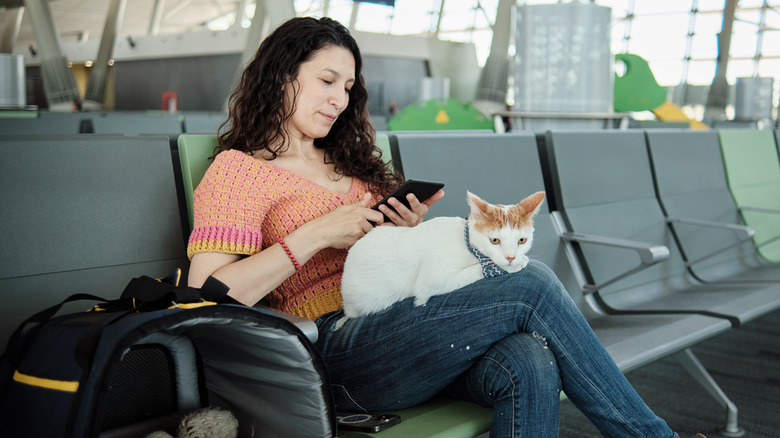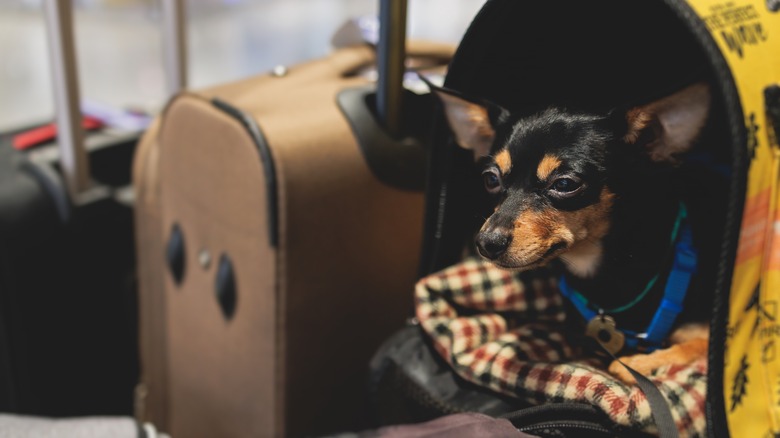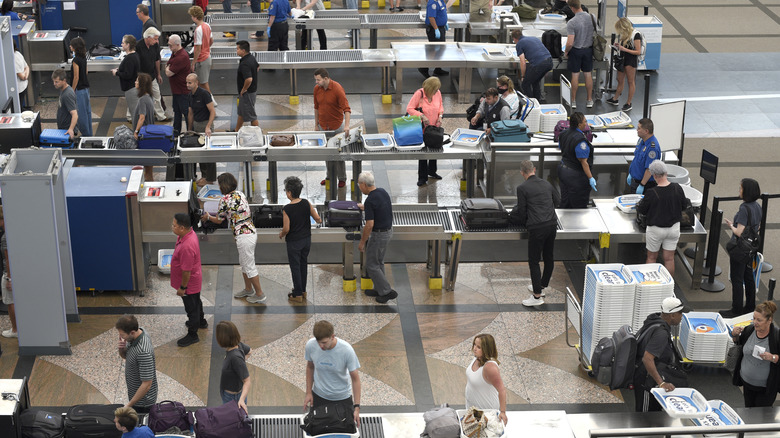The Dangerous Mistake Too Many People Make While Going Through TSA With A Pet
Whether you're going on an extended vacation or moving to a new country, it's inevitable that you'd want to bring your furry companion along for the journey. However, traveling with your pet requires some careful planning, especially if you intend to fly. You might need to submit special travel documents, buy an airline-approved carrier, and reserve your pet's spot on the plane well in advance.
With so much ground to cover, it's easy to overlook airport security when bringing an animal. Unfortunately, the TSA line is one place where many pet parents make a critical mistake, according to TSA spokesperson Lisa Farbstein. Farbstein posted an X-ray image of a cat to X (formerly known as Twitter) with the caption, "Attention pet owners: Please do not send your pet through the X-ray unit. Cat-astrophic mistake!"
The cat in the photo, seen still in its carrier, was incidentally put through a scanning machine intended for baggage at Norfolk International Airport. According to TSA, it's not the only pet that's been placed in the scanners. The agency said in a press release that "too many travelers" make the same mistake.
What could happen if you put your pet in the X-ray machine?
While TSA body scanners are safe for humans (and pets!), the cabinet X-ray machines at security checkpoints aren't. Placing your pet in one of the machines exposes them to potentially dangerous radiation. According to a 2021 research article published in Biological Reviews of the Cambridge Philosophical Society, dogs exposed to ionizing radiation are more likely to suffer from infertility, cancer, and other health issues. If you regularly travel with your pet, putting them through the X-ray scanner repeatedly could do considerable damage over time.
Thankfully, mistakenly placing your fur baby on the security conveyor belt just once is unlikely to give them cancer or other serious illnesses. The Food and Drug Administration notes that objects in X-ray cabinets are typically exposed to 1 millirad or less of radiation, yet most people receive a 360-millirad dose of radiation each year simply from their environments. Still, keep in mind that pets traveling in plane cabins are generally much smaller than people and may be more sensitive to the effects of radiation. On top of that, your canine or feline friend may get scared when zipped up and placed in a dark machine all by themselves.
How to bring your pet through airport security
Pets shouldn't be sent through the airport X-ray cabinet along with your travel pillow and carry-on luggage, but that doesn't mean they're exempt from security screenings. Knowing what to expect will make going through the TSA security line with your pet much easier. The agency urges owners to keep their pets in a carrier until they arrive at the front of the screening line. Then, when you're ready to place your items on the conveyor belt, remove your pet from their carrier and put the empty case along with your other belongings through the machine.
With your pet either in your arms or on a leash, proceed ahead, making sure to follow the instructions of the TSA personnel. In most cases, they'll ask you to walk through a body scanner or metal detector along with the animal. Note that a security officer may swab your hands for traces of explosives after you're finished handling your pet.
TSA Great Lakes posted a video to X demonstrating what the process looks like. If you're concerned that your animal will be reactive or uncooperative, let an agent at the checkpoint know. They may offer alternatives, such as private screenings in a separate room.


